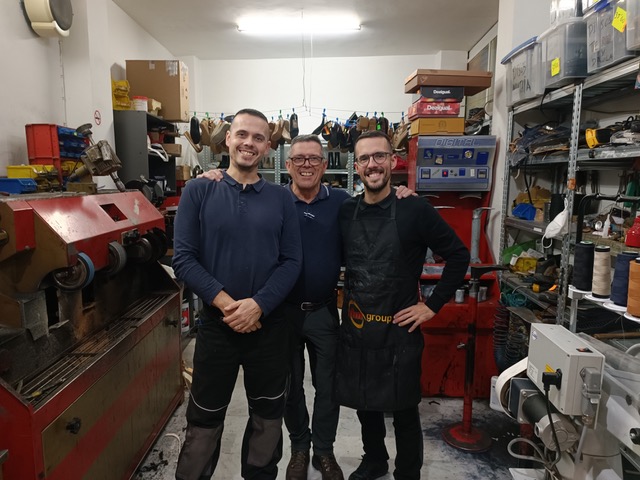
Ronda's cheery cobblers, Jaime, Miguel and Ismael Becerra. Photo © Karethe Linaae
Is it only me, or have you also noticed that everything lasts a shorter and shorter time? Be it mobiles that are virtually useless after a couple of years, computers that refuse to update, self-parking cars that go wild, or clothes and shoes that barely last a season - it looks like the disposable culture that we should have put behind us a long time ago, is here to stay. For this reason, I was glad to discover that some trades that have disappeared in many other countries, still prosper here in Spain.
Take their friendly shoemakers …
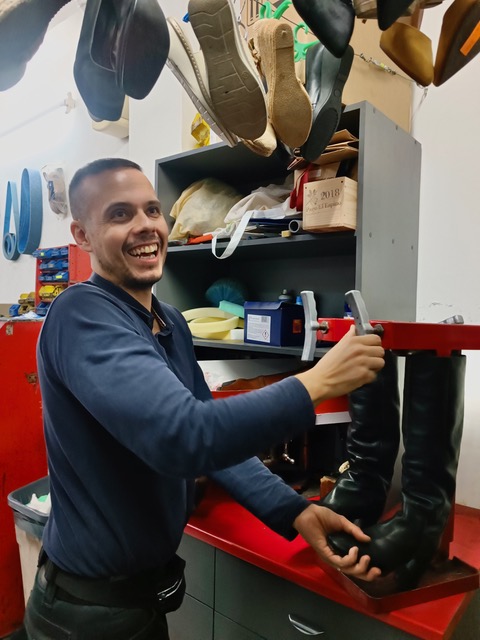
Jaime fixing a pair of boots with a smile. Photo © Karethe Linaae
When we lived in Vancouver, British Columbia, our Chinese shoemaker made it very clear that my French leather boots were long past their prime and impossible to fix. However, since these were my favourite boots of all time, I still brought them with me when we moved to Spain. And here in our small mountain town, the shoemaker took them in with no reservations whatsoever. He added a new sole, stitched them up, and polished them so that they lasted for another three winters, all for the price of four pairs of shoelaces!
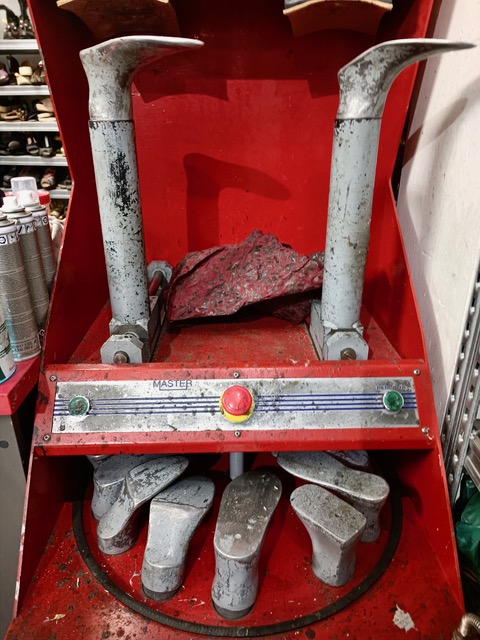
Shoeforms. Photo © Karethe Linaae
Cobblers or zapateros in Spanish is one of the oldest professions in the world. It is also a dying trade and a disappearing art in many Western countries, where we have become accustomed to buying a new item when something falls apart. It is increasingly more difficult to find someone capable of - and willing to - fix something as ‘degradable’ as used footwear. But at least here, the cobbler trade is well-regarded. Although Ronda has barely 34,000 inhabitants, there are three Zapateros that I know of in our town, and all run an industrious business with a bit of bag repair and belt sales on the side.
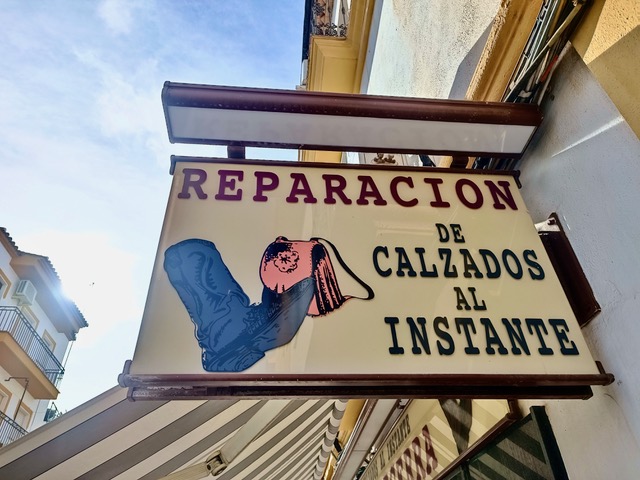
Sign. Photo © Karethe Linaae
Everything can be fixed
Our shoemaker, Zapatería Becerra, is a family business started by Miguel Becerra Aguilar (63) 40 years ago, and judging by the row of waiting customers, he won’t be retiring any time soon. The business has only increased, and his sons Jaime (42) and Ismael (34) started working with him after they finished senior high school. Today they have children of their own, and while both express hopes that their offspring will study instead of joining the family firm, they assure me that they enjoy their work. The only drawback is that they never have a single moment to sit down.
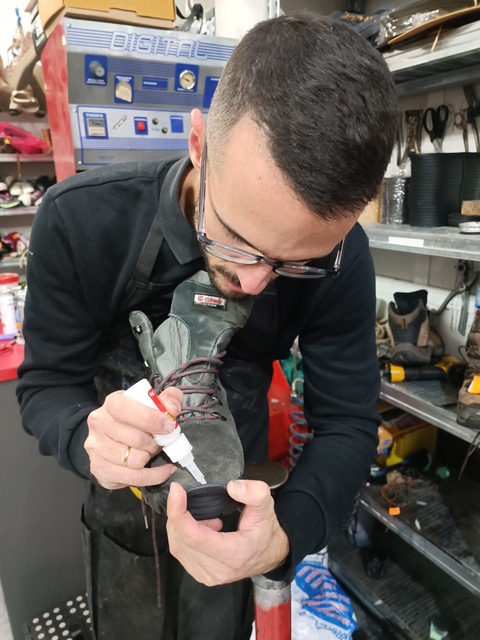
Ismael fixing a hiking boot. Photo © Karethe Linaae
Every time I have been to the Zapatería, including a couple of times I came by to interview them in their two-second break between clients, there has been a line-up. People bring old shoes, boots, sandals, stilettoes or slippers that need fixing, dyeing, and polishing, brand new shoes that need expanding, belts and watch straps needing extra holes or a new buckle and handbags, backpacks, suitcases and jackets with broken zippers or lacking Snap-on buttons, not to mention keys to be copied. The Becerra boys can fix virtually anything!
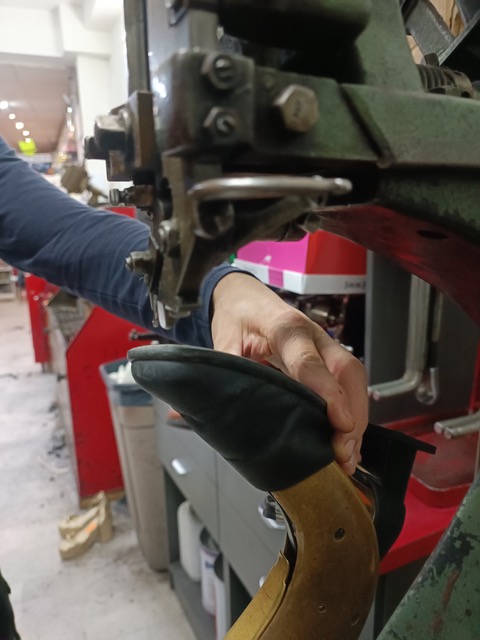
Using stitching machine from 1865. Photo © Karethe Linaae
Just for the last task, they have a row of seven machines that represent the technical evolution of key-copying from the middle of the last Century. The most valued antique in the shop is a curious sewing machine from 1865, and the oldest key-cutting machine with a very cool built-in lamp was the first that Miguel invested in when he opened the shop in 1984, and although he has the latest in laser cutting technology, it is still his preferred tool for the task.
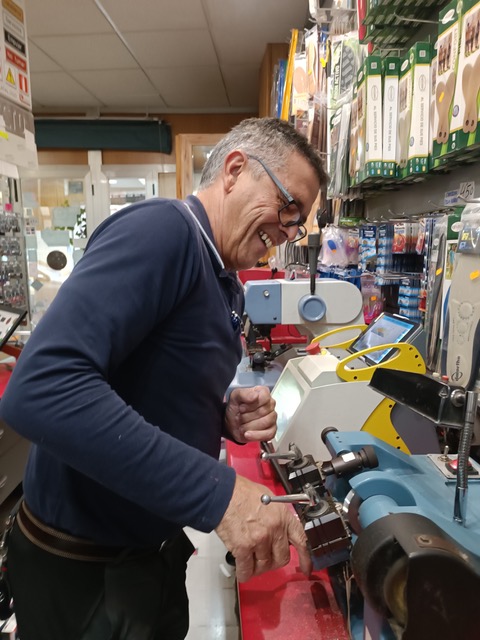
Miguel makes keys with the oldest and most dependable of his seven machines. Photo © Karethe Linaae
From baker to shoemaker
Miguel started working as a baker in the family’s bakery in the 1970s when he was a teenager. The Panadería which today is run by his cousin, is still so famous for its bread that the waiting customers spill onto the sidewalk. But Miguel didn’t enjoy working through the night as most bakers do and decided to become a shoemaker instead. He knew nothing about the trade and had no equipment, but gradually he learned and started his workshop across the street from their present location.
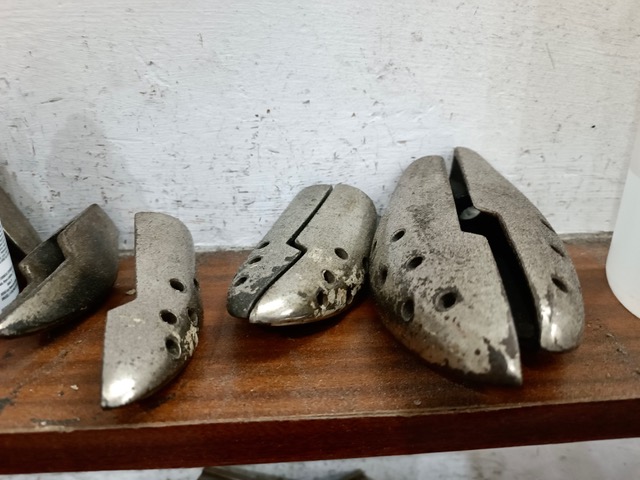
Metal lasts. Photo © Karethe Linaae
When I ask the sons how they learned the cobbler trade, they tell me that the only way to master the profession is to do it. “Everything we know, Dad taught us”, they agree. Jaime admits that he once had a dream of joining the police or the army, and Ismael says that if he ever changed job, it would have to be to become a bureaucrat with a generous salary, a big desk and very little to do. But none of them regret their choice and both smile while they hammer and patch and sew and glue until the sweat is pouring.
Jaime at the polishing machine. Photo © Karethe Linaae
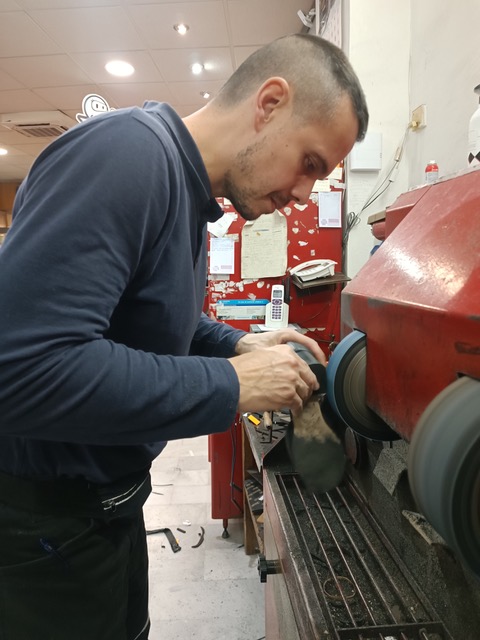
Jaime at the polishing machine. Photo © Karethe Linaae
Service with a smile
The entire family is a friendly lot and I ask them if they always are this happy.
«Well, our smiles aren’t glued on», Miguel winks and admits that there are certain days and a few customers that try even the endless patience of the Becerras. But generally, the clients are nice, and Miguel cannot recall having had a single complaint in all the years they have run the business. And why should they? The team works ceaselessly from when their doors open at 09.30 until 20.00 at night, except for a couple of hours siesta break. Around 150 customers walk in and out every day and the master cobbler calculates that if all three are at it, they can fix 60 pairs of shoes in a day, in addition to a slew of zippers and keys and what have you not …
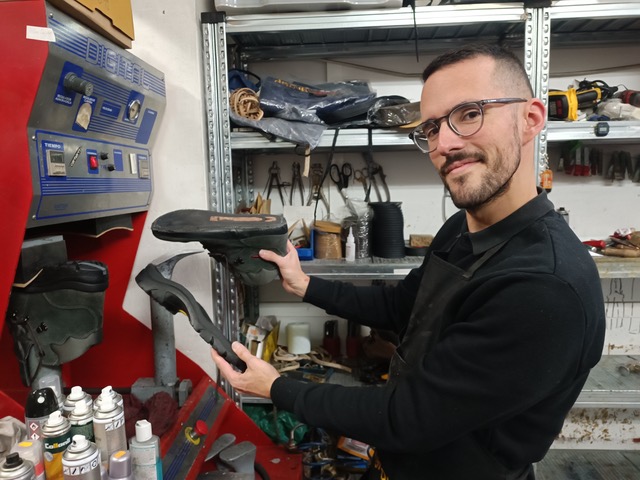
Ismael can fix anything. Photo © Karethe Linaae
Most clients are told that they can come back and pick up the repairs already that same afternoon or the next morning - that is if they don’t fix it for you there and then. «We try to repair everything the same day we get it in», Miguel says and adds that jobs are paid when they are picked up.
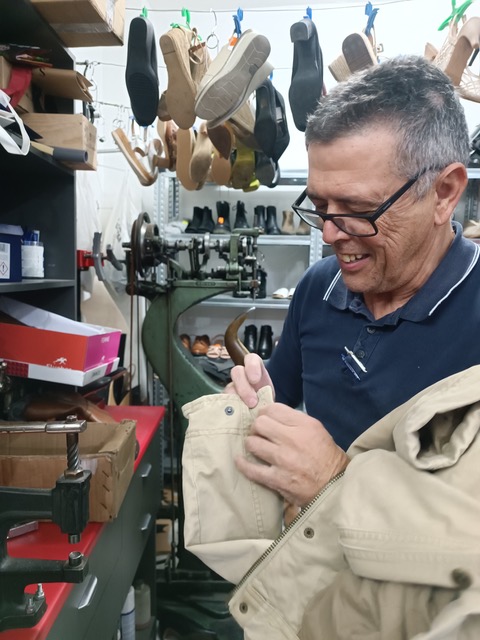
Miguel adding a snap-on button to a jacket. Photo © Karethe Linaae
With such rapid rotation, one would think that there are hardly any repairs sitting waiting to be picked up. And one would also assume that they dispose of unclaimed goods after a couple of months. That is a common business practice, no? But I could not be more wrong. Jaime shows me rows upon rows of shoes from what he calls the ‘pre-pandemic era’ that soon will have been left for five years. All are fixed, polished, and ready to go. With an average bill of let's say 10 euros a pop, they are sitting on an entire fortune of abandoned shoes.
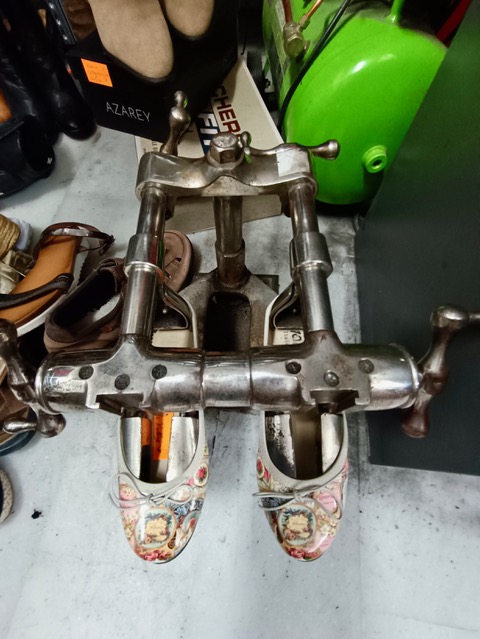
Under pressure. Photo © Karethe Linaae
I ask how they can keep track of the hundreds of shoes that people bring into the shop, particularly when all they ask for is people's first names which are written on a Post-it note and attached to the insole of the shoe. Miguel admits that they aren’t fully digitised yet, but they have a system that functions well by separating women’s and men’s shoes and ordering them by the date they were brought in. In addition, they know almost all their clients by their name - or by their footwear.
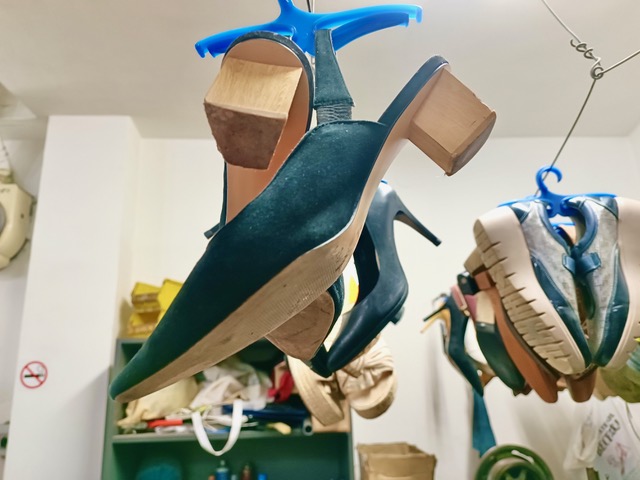
Dangling shoes. Photo © Karethe Linaae
Miguel remembers only once a man came in to pick up a pair of shoes that they couldn’t find. They searched high and low, but the shoes had vanished. The man called his wife who happened to be at the hairdresser’s next door to tell her that her shoes were gone. She immediately reprimanded him, saying that it wasn’t a pair of shoes that he was supposed to pick up. It was a pair of scissors!
I should have guessed. Of course, the shoemakers also sharpen knives and scissors on top of everything else they do. To me, the zapateros are an important Spanish cultural institution, and without them, Spain would simply not be the same.
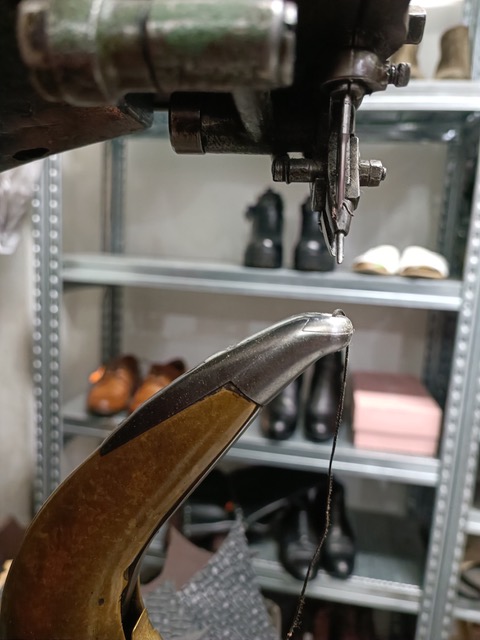
Stitching machine from 1865. Photo © Karethe Linaae